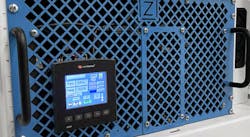Why You Should Change the Way You Think About Liquid Cooling
High performance computing, artificial intelligence, and data analytics are all driving demand for high density servers. Despite gains in power efficiency, conventional approaches to cooling simply can’t mitigate the heat generated by the computing power found in most racks today. Because of that, data center operators are having to rethink their cooling strategies.
The Data Center Innovation Will Change the Way You Think About Liquid Cooling, featuring Chatsworth Products and Zutacore, explores the latest innovations in liquid cooling technology and why liquid cooling will be a key component of the data center of the future. Check out our recent article series focused on the special report:
It's Time to Change the Way You Think About Liquid Cooling: We kick off our article series by outlining why data centers need to reconsider liquid cooling. We explore the economic, environmental, and efficiency disadvantages of room-scale air conditioning that can’t be overcome, despite technological improvements and the adoption of efficiency best practices.
The Advantages of Liquid Cooling: Liquid cooling does more than just improve power efficiency. The technology also improves the performance of CPUs and GPUs. In this article, we look at some of the primary advantages of liquid cooling as compared to traditional air cooling. Chief among those benefits is that liquid conducts heat up to 1,000 tomes better than air.
Liquid Cooling: Going Beyond Water: In the third article in our series, we look beyond water and explore more efficient chemical cooling alternatives that eliminate the risks and drawbacks associated with water-based cooling. First, we discuss dielectric fluid, a non-conductive liquid with very high resistance to electrical breakdown. Then, we explain direct-on-chip cooling works and why it is the most efficient use of dielectric liquids.
How to Prepare Your Data Center for Liquid Cooling: We conclude our article series with a short case study that highlights how one data center successfully deployed direct-on-chip cooling. We also explain how an integrated solution can help you prepare your data center for liquid cooling and the future.
Download the full report, The Data Center Innovation Will Change the Way You Think About Liquid Cooling, featuring Chatsworth Products and Zutacore, to learn more

Kathy Hitchens
Kathy Hitchens has been writing professionally for more than 30 years. She focuses on the renewable energy, electric vehicle, utility, data center, and financial services sectors. Kathy has a BFA from the University of Arizona and a MBA from the University of Denver.






